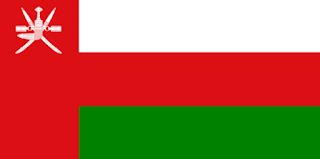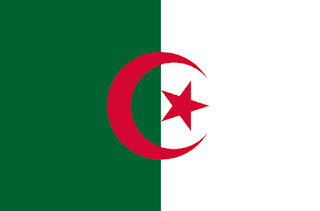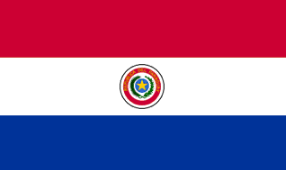FACTS ABOUT OMAN
AMAZING FACTS ABOUT OMAN
1.
Muscat is the capital city of Oman.
2.
The total population of Oman is 3,355,262.
3.
The natives of Oman are called Omanis.
4.
The Rial (OMR) is official currency of Oman.
5.
Oman shares a border with United Arab
Emirates, Saudi Arabia, and Yemen.
6.
The sultan of Oman–Sultan Qaboos Bin
Said–is the longest-serving ruler in the Middle East. Born on November 18,
1940, he is the person behind the modernization of Oman. He took control of the
Sultanate of Oman in 1970 on July 23rd.
And he is yet to name his successor.
7.
Trade of fish, dates and some
agricultural products along with tourism form a significant portion of the
economy of Oman.
8.
Oman is also one of the oldest
human-inhabited places on the planet. It is estimated that humans have been
living in the country for at least 106,000 years.
9.
It is also the oldest independent state
in the Arab world.
10.
About 75% of the people living in Oman
are Muslims.
11.
Oman’s first university, Sultan Qaboos
University, opened in 1986.
12.
As per the 2014 census, Oman’s
expatriate population comprises 43.7% of the country’s total population.
13.
Oman has 91.1% literacy rate.
14.
A city called ‘Bahla’ in Oman is known
as the center for pottery.
15.
Birds from three continents–Asia, Europe
and Africa–can be seen in Oman. Oman has been called ‘the best-kept secret in
the world of birdwatching.’
16.
Muscat Clock Tower is the oldest
monument in modern Oman.
17.
Under the 1996 Constitution’s “Basic Law
of the State,” Oman is an absolute Monarchy (Sultanate).
18.
The national symbol of Oman has a pair
of crossed Khanjars. This symbol is also used on the national flag and other
government logos. It is a symbol of manhood and bravery. If you are interested
in buying one, a real khanjar could cost you OMR 500.
19.
Oman is also a member of the United
Nations and the Arab league.
20.
In Oman, almost all signs and writings
appear in both Arabic and English.
21.
Oil and gas are the major export items
of Oman, while copper is also exported in limited quantities.
22.
Interestingly, Oman is literally a
terrorism free country. Another country where terrorism is nonexistent is Qatar
– as reported by the Global Terrorism Index (GTI) report.
23.
Believe it or not, Oman is a country
where crime is also almost nonexistent.
24.
Oman produces a whopping 900,000 barrels
of oil per day.
25.
Omanis are also credited with being the
greatest ship builders in the world.
26.
Apart from the local Omani people, the
other people living in the country are from India, Pakistan and Sri Lanka.
27.
Mountain Dew is the top-selling beverage
in Oman.
28.
And you would be amazed to know that
Coca-Cola products are not found in abundance in the country. This fact again
signifies the love of Omani people for Mountain Dew.
29.
Want to save some on taxes? You may want
to work in Oman; Because Oman does not levy income tax. However, a small amount
from workers’ earnings is paid towards social security.
30.
Omanis are also among the finest
breeders of Arabian horses. Their horses are sold for hefty prices all over the
world.
31.
If you want to buy alcohol in Oman, you
have to have a license to buy such beverages. Moreover, Omanis are allowed to
spend no more than 10% of their monthly income on alcohol.
32.
Up until 1970, there were no hotels in
the country. But today there are hundreds of hotels. Tourism is a major
industry in Oman.
33.
In earlier times, Oman made a lot of
money from the trade of incense.
34.
Before Islam reached Oman, Omanis practiced
Ibadhism. The people belonging to this sect practiced austerity and tolerance.
35.
It is a tradition in Oman to greet a
visitor with a bowl of dates, qahwa (coffee with cardamom) and fruit.
36.
Muscat, the capital of Oman, was
occupied by the Portuguese for a period of 140 years (1508-1648). After the
Portuguese, the Ottomans took control of Oman, only to be pushed out by the
current line of leading sultans. However, it was once again occupied briefly by
Persia, but it (Oman) finally succeeded in freeing itself. During this time,
the country was also known as Muscat and Oman.
37.
Date palms are served with coffee in
several of the Omani hotels.
38.
In Omani culture, Ramadan (the month of
fasting) and other Islamic festivals are very important.
39.
Women wear hijab and abaya. Most women
do not cover their heads in offices. They also wear brightly colored dresses
during festivals such as Eid.
40.
Omani men wear–Dishdasha–an ankle length
robe.
41.
Locals smoke traditional shisha. These
are also known as hookah pipes or hubbly bubbly. However, their proper name is
nargile.
42.
The Omani week ends on Friday. Omanis
enjoy Thursdays and Fridays to their core. In the coming years, they are
planning to shift their weekends to Friday and Saturday.
43.
Women-only souq is an open-air
marketplace or commercial quarter in Western Asian and North African cities.
(The equivalent Persian term is “bazaar” – Wikipedia.org) It takes place every
Wednesday in the city of Ibra. Only women are allowed to participate in this
open-air marketplace. Women sell and buy a variety of things, including jewelry
and spices.
44.
The grandest mosque in Oman–The Sultan
Qaboos Grand Mosque–was built from 300,000 tons of Indian sandstone. The
construction of the mosque took six years and four months to complete. It is
located in Muscat.
45.
Ornamented, decorated and embroidered
doors are common in Oman, providing a popular attraction for visitors.
46.
Mesmerized by these interesting facts
about Oman? Want to visit the country? Take a note: winter is the best time to
visit this Arab country.
47.
Except in Muscat, women in Oman are not
easily seen on the streets. Omani women are generally required to stay at home
and look after the household – except for one day.
48.
Women in Oman wear facemasks and burqas
depending on the weather conditions and their tribe. However, you may not find
any woman without veils.
49.
It is customary in Oman for women to
meet other women at the occasion of a birth in the family. While at the time of
death, it is the men who attend the actual burial of a body.
50.
The main meal of the day is consumed in
early to mid afternoon. It usually consists of a large serving of rice and a
sauce made from tomato and fish or meat.
51.
Men wear turbans and caps that are
generally embroidered.
52.
Oman also has one of the oldest
marketplaces in the world – The Mutrah Souq. This marketplace has so many
colorful little shops where you can buy bukhoor, frankincense (an aromatic
resin used in incense and perfumes), silver khanjars, jewelry and many other exotic
items.
53.
The Telegraph Island–a maddening island,
which is also known as Jazirat al Maqlab in Oman–was used as a telegraph
outpost for important communications between Britain and India between 1864 and
1869. The oppressive heat and the lonely atmosphere had made the soldiers mad
when they were stationed at the football-field sized island. Thus, the outpost
was abandoned in the mid 1870s.
54.
More than 100 tombs all shaped like
beehives stand contumaciously on the hilltops of Northern Oman. These tombs are
estimated to date from 3000 to 2000 B.C.E.
55.
In 1988, these tombs were declared a
World Heritage Site. Together, these tombs form one of the largest prehistoric
necropoleis (a tract of land used for burials) in the world.
56.
The majority of the monuments in Oman
were built with regular cut stones.
57.
Thousands of turtles migrate to the
Omani coastline each year. If you are interested in watching the turtles hatch,
you may want to visit Ras Al Jinz, which is one of the prime locations for
turtle watching. There, you have a chance to see different species of turtles,
including the Green Turtle, the Loggerhead Turtle and the Leatherback Turtle.
58.
A component of the most valuable perfume
in the world–Amouage–is produced and traded in Oman. It is known as
Frankincense, and is available in its purest form for purchase for OMR 50 per
bag.
59.
Oman Exports:
petroleum, fish, metals and textiles.
60.
Oman Imports:
machinery and transport equipment, manufactured goods, food, livestock and lubricants.
61.
The internet country code for Oman is .om.




Comments
Post a Comment